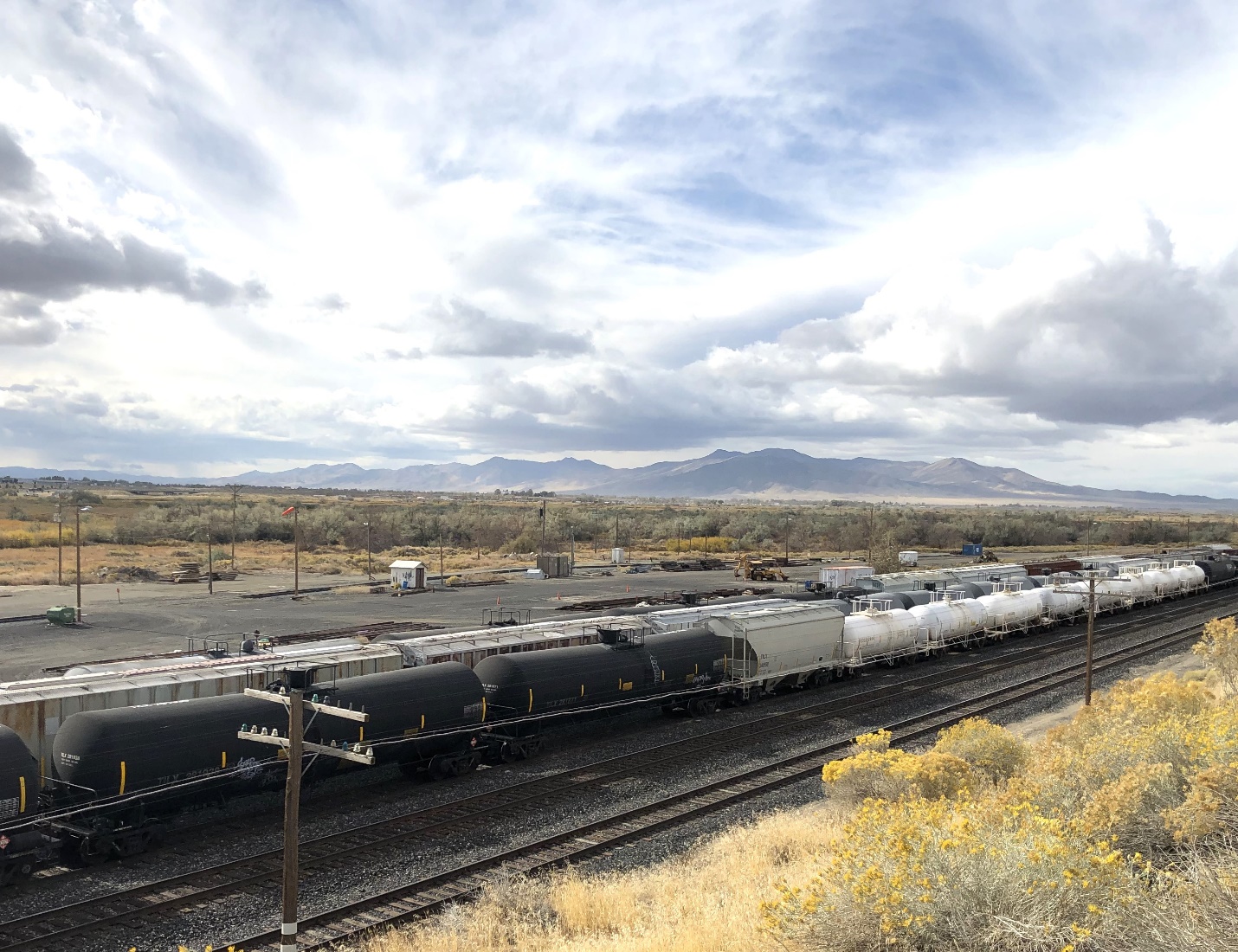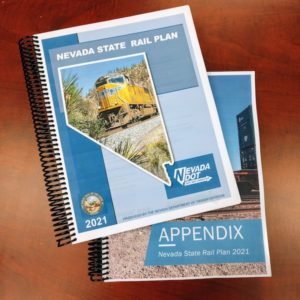
The 2021 Nevada State Rail Plan is unlike any other transportation plan. It is an action plan for pragmatic, statewide rail-enabled economic development. The plan consummates an eighteen-month immersion by OTNA and its for-profit affiliate, Strategic Rail Finance, positioning Nevada’s freight system to make a measurable contribution to the state’s economic and environmental vitality.
Typically, a submitted rail plan is the end result. The Nevada plan is a future-facing, detailed action plan for results.
In creating the plan, OTNA and SRF:
- Facilitated in-depth dialogue with hundreds of shippers, stakeholders, and developers to catalog current and planned business developments and infrastructure opportunities
- Conducted a deep dive into truck movement data in and through the state to pinpoint new opportunities for rail growth and improved multi-modal integration—a rail plan first
- Initiated supply chain mapping for entire industries to pinpoint synergies for optimized operations and infrastructure
- Crystalized the substantial investment opportunity for private sector capital to augment the limited availability of public-sector funding
Here are the 10 transformative principles applied in the 2021 Nevada State Rail Plan:
- Design for Action: Create dynamic, evolving plans that adapt to changing conditions rather than static reports that quickly become outdated
- Radical Inclusion: Engage all stakeholders—375+ stakeholders and 141 shippers in Nevada alone—to identify opportunities invisible to conventional planning
- Actionable Data Tools: Develop innovative electronic mapping that integrates multiple data layers to reveal new possibilities for rail development
- Integrated Transportation: View rail and roads as one system, optimizing each mode’s strengths rather than forcing unnecessary competition
- Focus on the Whole Supply Chain: Collaborate across businesses, agencies, and industries to restore the comprehensive approach that built America’s original rail network
- Cross-Border Planning: Recognize that supply chains extend beyond state lines—70% of Nevada truck traffic is moving to or from California
- Economic Development Integration: Bridge the gap between transportation and economic development agencies, transportation providers, and shippers to unlock growth opportunities
- Land Use Coordination: Incorporate freight transportation needs into land use planning, preserving rail-adjacent land for appropriate development
- Compelling Growth Plans: Present railroads with pragmatic business strategies that make the development of local services financially attractive
- Private Capital Attraction: Tap into hundreds of billions in available private investment by aggregating projects into comprehensive industrial and regional strategies
The Path Forward
This approach identified more than 50 private-sector projects in Nevada that can be advanced through the profitable investment in new rail infrastructure and service. By transitioning from static reports to dynamic action plans, we can attract significant private capital.
With no technology on the horizon capable of replacing rail’s efficiency for moving heavy freight, this model represents our best path toward sustainable supply chains. Public officials, private businesses, industrial developers, and stakeholders across the state have expressed their enthusiastic support for this groundbreaking approach.
For a 15-minute introduction to the plan, we invite you to read The New Blueprint for Rail-Enabled Economic Development.
The full 2021 Nevada State Rail Plan is available here.

Or if you would like to review the plan’s sections individually:
2021 Nevada State Rail Plan | Individual Chapters, Appendix, & Links

